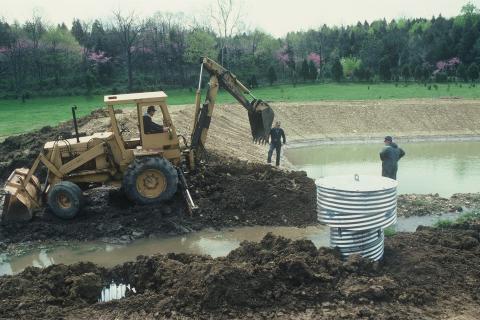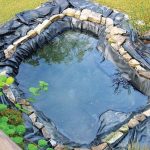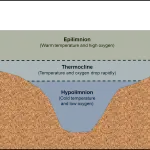How to Build a Large Pond for Fishing
If you’re an avid angler or just someone who loves spending time by the water, building a large pond for fishing can be a rewarding and exciting project. Not only will it provide you with a serene and beautiful setting for fishing, but it can also enhance the natural beauty of your property. In this comprehensive guide, we’ll walk you through the essential steps to build a large pond for fishing, from planning and excavation to stocking and maintenance.
Planning Your Large Pond
Before you start digging, it’s crucial to carefully plan your large pond to ensure its success as a fishing destination. Here are the key factors to consider during the planning phase:
1. Location: The first step in building a large pond for fishing is to select an appropriate location on your property. Look for a site with adequate space, minimal trees or obstructions, and access to a reliable water source for filling and maintaining the pond.
2. Size and Depth: The size and depth of your pond will significantly impact its suitability for fishing. Aim for a large enough surface area to support healthy fish populations, with a depth of at least 8-10 feet in the deepest areas to provide sufficient habitat and water volume.
3. Legal and Environmental Considerations: Before proceeding with your pond project, it’s important to check local regulations and obtain any necessary permits. Additionally, consider the environmental impact of pond construction and ensure that it aligns with conservation and land use guidelines.
Excavation and Construction
Once you’ve completed the planning phase, it’s time to move on to the excavation and construction of your large fishing pond. This stage involves several critical tasks:
1. Excavation: Excavating the pond basin is a major undertaking that often requires heavy machinery such as excavators or bulldozers. Ensure that the excavation follows the planned dimensions and contours of the pond, taking care to create a balanced ecosystem with varying depths and underwater structures.
2. Dam and Spillway: If your large pond will include a dam to retain water, it’s essential to construct a sturdy and well-engineered dam and spillway system. Proper design and construction of the dam are crucial for maintaining water levels and preventing erosion or breaches.
3. Liner Installation: Depending on the soil composition and water retention characteristics of your site, you may need to install a pond liner to prevent seepage and ensure consistent water levels. Choose a high-quality liner material that is durable and resistant to punctures or tears.
4. Inlet and Outlet Structures: Implementing effective inlet and outlet structures is vital for managing water flow and quality within the pond. Consider installing a screened inlet to prevent debris and sediment from entering the pond, as well as a controlled outlet to regulate water levels and quality.
Stocking Your Pond
With the construction phase complete, it’s time to introduce fish to your newly built large pond. Stocking your pond with the right fish species is crucial for establishing a thriving and sustainable fishery. Consider the following steps:
1. Fish Selection: Research the fish species that are well-suited to your pond’s size, depth, and water quality. Common choices for large fishing ponds include bass, catfish, trout, and bluegill, each of which contributes to a balanced and diverse fish community.
2. Stocking Rates: Determine the appropriate stocking rates based on the size and characteristics of your pond, taking into account factors such as available habitat, food sources, and the desired balance between predator and prey species.
3. Acclimation and Release: When introducing fish to your pond, follow proper acclimation procedures to minimize stress and ensure successful adaptation to their new environment. Gradually release the fish into the pond, monitoring their behavior and health to ensure a smooth transition.
Pond Maintenance and Management
Once your large pond is stocked with fish, ongoing maintenance and management are essential to support a healthy and productive fishing environment. Here’s what you need to know:
1. Water Quality: Monitor and maintain optimal water quality parameters, including oxygen levels, pH, and nutrient concentrations. Regular testing and potential adjustments are necessary to prevent water quality issues that could harm fish populations.
2. Vegetation Control: Manage aquatic vegetation to prevent overgrowth and maintain open water areas suitable for fishing. Consider using environmentally friendly methods such as manual removal, biological controls, or targeted herbicide applications as needed.
3. Fish Feeding and Supplemental Habitat: Depending on the natural productivity of your pond, you may choose to provide supplemental feeding to support fish growth and condition. Additionally, consider adding artificial habitat structures such as fish attractors or spawning beds to enhance the pond’s fishery.
4. Predator Control: Implement strategies to manage potential predators that could threaten the fish population, such as birds of prey, otters, or raccoons. Use deterrents or protective measures to minimize predation and ensure the long-term success of your pond as a fishing destination.
Enjoying Your Large Fishing Pond
With careful planning, construction, and management, your large pond for fishing can become a cherished outdoor retreat for relaxation and recreation. Whether you’re casting for trophy bass, teaching a child to fish, or simply enjoying the tranquility of the water, your pond will provide endless opportunities for memorable experiences and the joy of angling.
In conclusion, building a large pond for fishing is a substantial undertaking that requires thoughtful consideration and diligent effort. By following the steps outlined in this guide and seeking guidance from experienced pond builders or fisheries professionals, you can create a stunning and productive fishing pond that enhances your property and enriches your love for angling. From the initial planning stages to the ongoing care and enjoyment of your pond, the journey of building a large fishing pond is a fulfilling endeavor that connects you with nature and the timeless pursuit of fishing.





